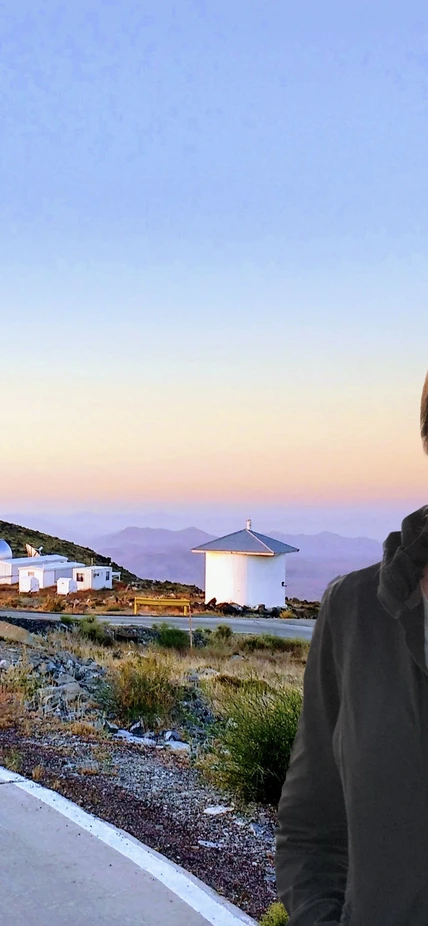Washington, D.C.—Observatories NASA Hubble Postdoctoral Fellow Maria Drout will receive the tenth Postdoctoral Innovation and Excellence Award (PIE). These awards are made through nominations from the departments and are chosen by the Office of the President. The recipients are awarded a cash prize for their exceptionally creative approaches to science, strong mentoring, and contributing to the sense of campus community.
Maria Drout was one of four Carnegie astronomers who, along with colleagues from UC Santa Cruz, provided the first-ever glimpse of two neutron stars colliding last August. She was first author on a Science paper, which measured the changing light from that merger to shed light on the origin of the heaviest elements in the universe. The discovery was widely covered by the media and opened the door to a new era of astronomy.
Drout’s research focuses on understanding the evolution of massive stars, their death as supernova explosions, and their influence on the universe. In addition to her Carnegie postdoctoral position, she is an associate researcher at the Dunlap Institute at the University of Toronto.
By identifying visible light produced by the neutron star merger, Drout and her team pinpointed the origin of a gravitational wave signal, ripples in space-time, for the first time—less than 11 hours after it was detected. The astronomers were alerted to the event by the Laser Interferometer Gravitational-Wave Observatory (LIGO), which detects gravitational waves caused by distant cosmic events. In February 2016, LIGO announced the first detection of gravitational waves caused by two black holes merging. This discovery was awarded the Nobel Prize in Physics.
Unlike most observing nights, after receiving the alert of the neutron star merger, Drout and her team members had to quickly scramble and prioritize techniques to identify and follow the rapidly fading light from the explosion—a true testament to her devotion to team work.
Among her many outreach activities, Drout is dedicated to providing graduate students in technical and scientific fields with the communication skills that they will need throughout their careers, as evidenced by initiatives such as Astrobites.com and the Communicating Science Workshop series (ComSciCon). Her expertise in this arena was flawlessly executed during the many media interviews she conducted for the neutron star merger discovery.
Observatories director John Mulchaey remarked; “Maria has established herself as a world leader in the field of transient astronomical events. Her efforts regarding the first electromagnetic detection of a gravitational wave event were nothing short of heroic. Not only did she coordinate the observations of this remarkable event on many telescopes around the world, she did this while on the road to Idaho where she helped participate in an educational event the Observatories held around the Great American Eclipse. Her paper on the neutron star merger is one of the most important and most cited of the hundreds of papers that have been written about this event so far.”
Drout will be joining the faculty in the Department of Astronomy and Astrophysics at the University of Toronto in September 2018.
